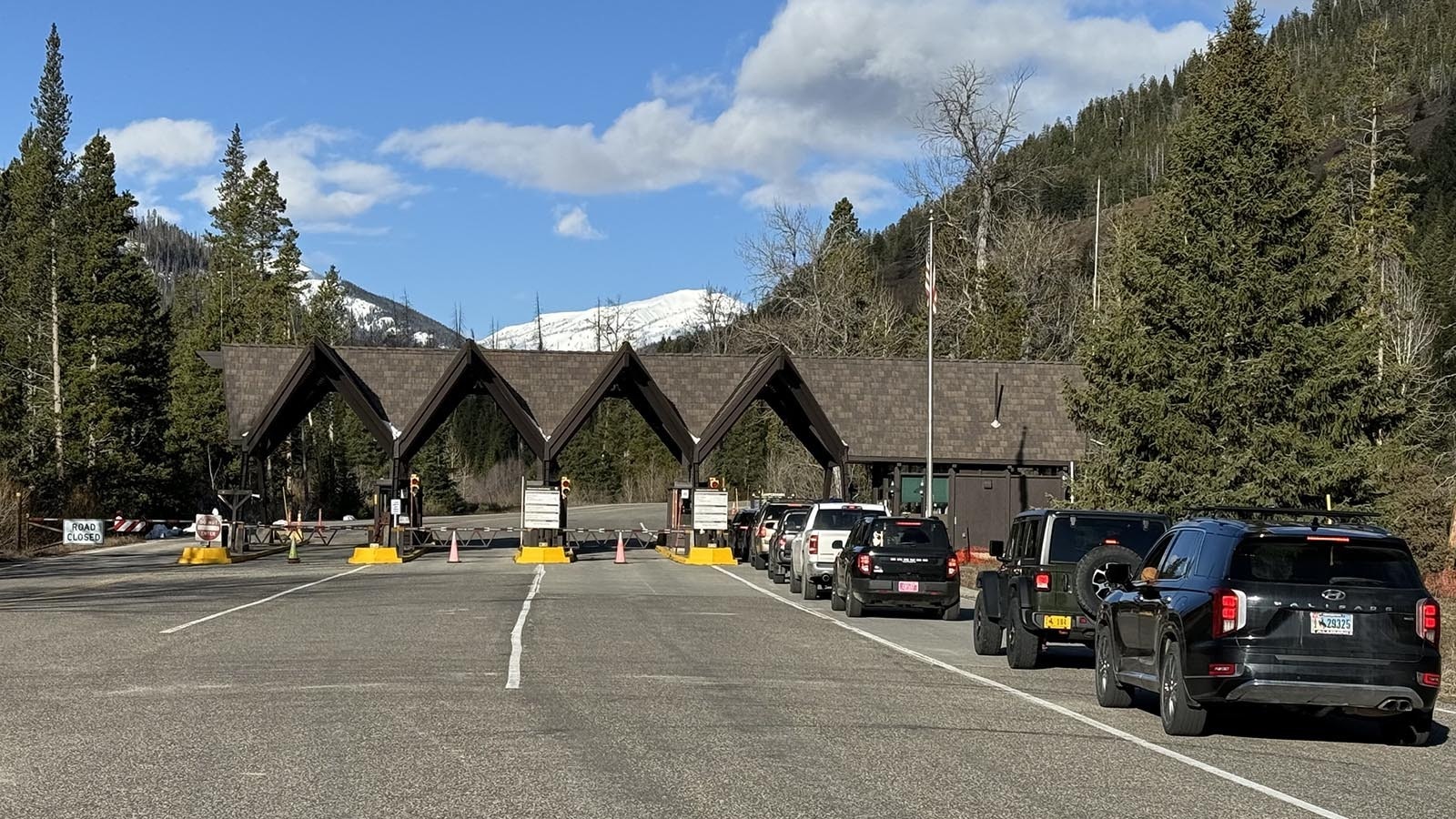When patrons of the Parkman Bar and Grill heard there was a new orange glow on the face of the Bighorn Mountains that loom over the rural Wyoming town, they couldn’t resist rushing out to the parking lot to see.
Sure enough, there was a huge column of orange fire lighting up the night. It looked close, and was coming closer to the folks who’ve spent the last two weeks threatened by the Elk Fire burning in northern Wyoming.
The orange glow was real — a fire column swooshing up to the heavens like a fiery skyscraper — but it was also something of an illusion.
Rather than the fire becoming more out of control, it was the result of efforts to keep the Elk Fire genie in the bottle that firefighters with the Rocky Mountain Area Complex Incident Management Team have mapped out for it.
The fire shows another slight decrease in containment Friday morning, from 15% to 14%, the incident team reports. That’s because of the growing perimeter of the fire — mostly to the southeast — and not from losing any already achieved containment.
The fire has grown to more than 79,000 acres with “a significant portion of the firefighting effort focused on the southern end of the fire,” according to Friday’s report.
A lot of progress is being made that’s not yet reflected in the numbers.
Dropping ‘Dragon Eggs’
“What people were seeing last night was a combination of the main fire coming to the southeast in the Big Goose drainage,” Rocky Mountain Area Team spokesperson Kristie Thompson told Cowboy State Daily. “It was also us putting strategic firing on the ground on the other side, on the south side of Big Goose Canyon.”
The strategic fires were set with what firefighters have nicknamed “dragon eggs,” Rocky Mountain Area Team’s Field Operations Chief Adam Ziegler told Cowboy State Daily on Friday morning. They’re basically incendiary devices that can be accurately deployed to hard-to-access areas for strategic burning.
“There are two different types,” he said. “And I’m not an aviation person, but they can use both, but it’s essentially the same technology, just on a different scale between a drone and a helicopter.”
In this particular case, drones were used for accuracy.
“They can’t fly as far, but they’re a little more precise,” Ziegler said. “And what we’re using them for here is just to slow or check up the natural fire progression. So instead of the natural fire being a very intense fire, going through and killing everything ahead of it, we’re using the helicopters and the dragon eggs to essentially light a cooler fire ahead of that. It moderates that temperature, lessens the severity of the burn.”
Doing that not only lessens the intensity of the fire, slowing it down, it can also save more of the forest’s trees, Zeigler said.
These particular dragon eggs are baby-sized, about the size of a little pingpong ball. Their actual name is a PSD for plastic sphere dispenser. They are polystyrene balls holding flammable materials such as potassium permanganate.
“They will hit the ground and explode into pinpoint fire, so we can slowly control that fire down,” Thompson said. “What people were seeing last night is that fire slowly coming down as the main fire comes up, and they were kind of hitting each other into a wave.”
As the two waves crashed into each other, it created the dramatic and tall column of fire that could be seen all around the Big Horns, from Sheridan to Parkman and to Big Horn and Story.
“It looked very dramatic and scary,” Thompson said. “And we realized that would happen, so that’s why we started talking about these operations days ago, trying to minimize the fears as much as possible.”
In spite of how it looked from the outside, that tall column of fire was actually all part of the plan. The firing operation will minimize the fire’s impact to the watershed and to the water intake facility that serves Sheridan, as well as slowing the fire down, giving firefighters more time to prepare Red Grade Road to hold the line.
“We’re being told by our operations crews this morning that things actually went very well, were very successfully implemented,” Thompson said Friday morning. “And they’re glad that it worked out the way did. We wish we hadn’t had to implement those, but we needed to get ahead of the fire.”
Now finally, firefighters are no longer playing defense, Thompson said.
“This is our first time getting to play offense on this fire,” she said. “We are taking fire to the fire.”
Work Continues At Red Grade Road
Although the overnight operation might sound like it was part of building that catcher’s mitt that the Rocky Mountain Area team described building during a public information session in Big Horn on Wednesday night, the area where the column happened is actually quite a bit of ahead of the catcher’s mitt being constructed along Red Grade Road.
“There’s kind of two catcher’s mitts, if you will,” Thompson said. “There’s a closer one where we’re doing those firing operations, starting to slow things down, trying to take some steam out of the fire, take some heat out of the fire, take some heat out of the fire.”
The work in Red Grade Road will hopefully take the final fight out of the fire in that area, at least, creating more containment.
“We’re removing vegetation near structures near the road, widening the red grade road,” she said. “And around structures they’re putting in where appropriate, sprinklers and hose systems, so those things can be energized if the fire approaches that.
“You can see the fire a lot more at nighttime. So even if the same things are happening during the day, it’s nit as dramatic looking as it is at night.”
Contact Renée Jean at renee@cowboystatedaily.com

Renée Jean can be reached at renee@cowboystatedaily.com.












